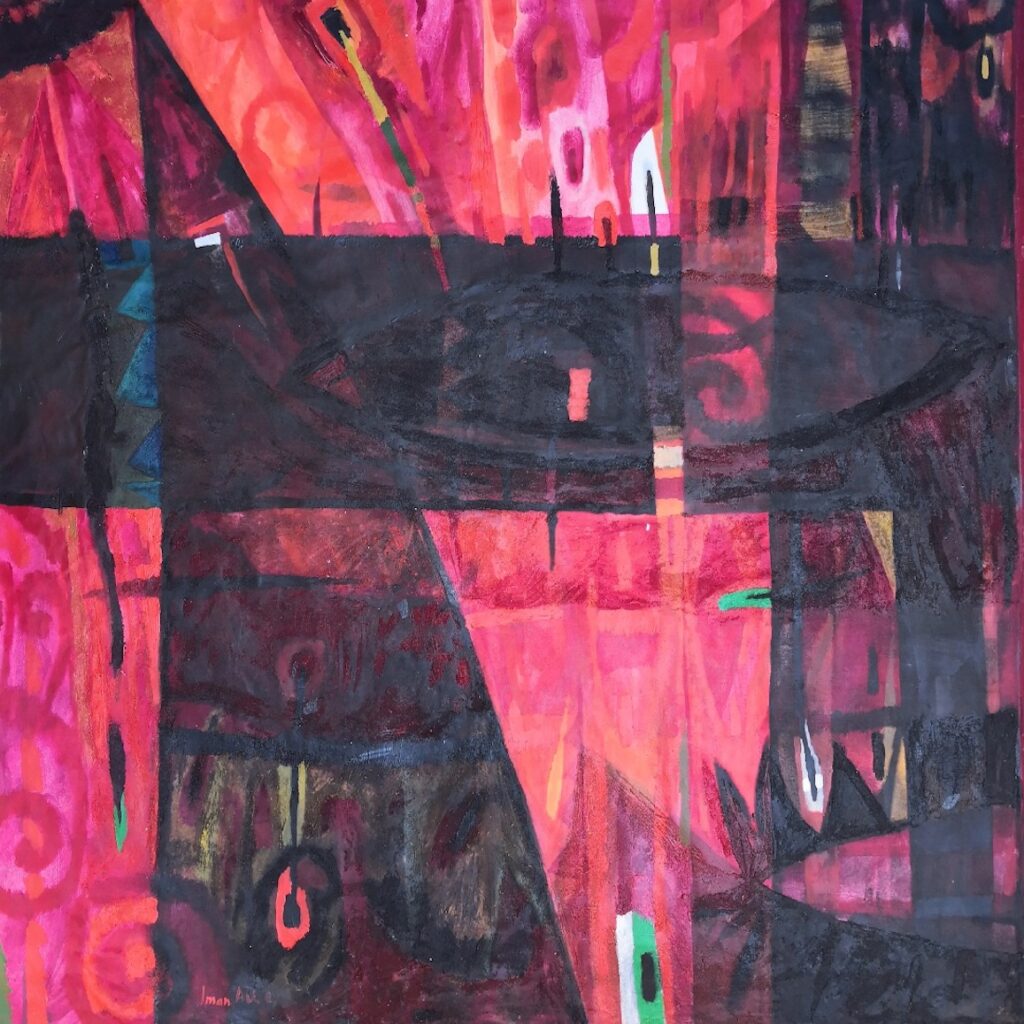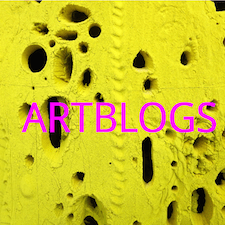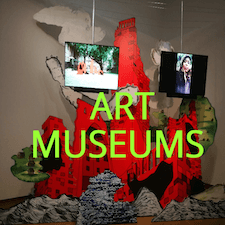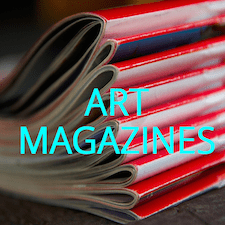Newsletters
Iman Ali Khaled
-FREEDOM TO THE MODERN PERSPECTIVE-
LIFE AND WORK
Iman Ali Khaled, born 1962 in Baghdad (Iraq) was educated from 1979-1984 at the Academy of Fine Arts in Baghdad by her teachers in the tradition of the radical modernism of her Jewaad Seleem (1919-1961). After her studies she, as a Kurdish painter, chose to stay out of the group of artists that, receiving privileges from the Regime – were working as officially ‘independant’ artists but unless producing art works which the Regime required from them to glorify his oppressive régime. During these eight years she worked as a free painter and as a theatrical costume designer for Iraq Fashion House. Later after the Iraq Wars and the continuing agression ‘Killing Fields ‘ of the Regime in Kurdistan, Iman Ali Khaled, like most artists from Kurdistan, fled to Europe and settled down in Amsterdam.
In the Netherlands now Iman Ali Khaled was able – due to her transverse thinking – to live her urge for freedom and modernity that was lacked in cultural, religious and private life in Iraq. Her paintings are a mix of arabesque and contemporary Western art movements, powerful reflections like ‘ Silent Thunders ‘ of her Iraqi-Kurdish past as well as dream images that actually represent her free Western life in the Netherlands: “The difference between my autonomous work of then and now, is that I now have more research and more experiment in making a colourful and powerful imagery. Subjects such as freedom were then in Iraq in contrast to here a taboo and dangerous. That has made me stronger as a person and as an artist in my work. Often I paint with my hands as digging in the sand of my past to make new sculptures on canvas of my free present life.” (Iman Ali Khaled)
PAINTINGS
The paintings of Iman Ali Khaled consist of several layers, each with its own story. “My work is a kind of film, like a series of snapshots from my life. When I paint, I am always busy with the ‘now’, with the current feelings in my life and how they can be pictorially translated. If the world looks different to me the next day while I’m still working on the picture, I create a new world with a different story by putting a new layer filled with emotion, colours and life over the previous one and while keeping some details underneath. ”
Iman Ali Khaled creates her paintings as three dimensional color spaces – sculptures on canvas – by adding either sand or silicone mass to the colors to enhance the expressivity of her works. Her color palette usually lingers in rich colors, from warm yellow, orange and red tones to deep night blue nuances. During the working process, the screen is also rotated over and over again to keep the composition in balance. Recurring themes are interpersonal relationships, symbolized in close-ups of eyes, hands, mouths and faces, abstracted and expressive in ever new variations. Although their work seems cheerful at first glance, a closer look reveals a sometimes lyrical-melancholic or aggressive “sound” that is as versatile as the facets of human life.
OBJECTS AND MORE
In addition to her works on canvas or paper, Iman Ali Khaled creates sculptural works which are made of various materials, often painted in colours. She transfers her general methods of composition and her artistic expression of her paintings to these three-dimensional objects as well. These also illustrate the tense complexity of human life and social relationships – between loneliness and togetherness – in the good and in the bad.
They also symbolically describe her life experiences of the struggle of the sexes in the confrontation with the daily life. As an artist, Ali Khaled’s strength shows in honest and ruthless handling of these topics. The crises of her own life, like her own now overcoming cancer, flow into this highly personal context and can be felt by the attentive viewer.
Read our related Article:
-ART, FREEDOM, THE INDIVIDUAL AND SOCIETY-

FREEDOM, THE INDIVIDUAL AND SOCIETY
Societies exist by the extent to which standards and values are accepted and supported and the extent to which each individual therein can express itself free and autonomous. The freedom of the individual is determined by its ability to have and express an opinion that may differ from the conventional. Freedom of choice or autonomy and comparison of different standards and values are also related to the knowledge that every individual has gained. Individual freedom and autonomy mean also that everybody, on the basis of reasonable knowledge of their choices, should be able to give direction to their own existence. This freedom is unattainable for someone who is able to have only one way of looking to live. Such a person is no master of his existence, but will probably mostly be driven by prejudices, ignorance, habits or guilt prevailing from culture or religion.

ART, FREEDOM AND THE INDIVIDUAL
Knowledge, gathered through science, philosophy, politics or religion, offers images of our environment and critical options to compare our experiences and choices to. One could say that the language or metaphor that is used by art and literature, is more powerful and direct partly due to it’s independency of society. Different from the structured and functional language of science, religion and politics, the language of the imagination and reflection, by the multitude of its shapes, incites to look every time again and tests our critical jugdment The innovative aspect of art is in the critical perception, confrontation, dialogue and ultimately in mediation, resolution or new vision. Art and literature are able to stimulate the self-consciousness and the imagination of people, provide in-sight in their own existence and offer alternative ways to look at life. More ‘Art’ is often inherent in a greater chance of freedom.

ART, FREEDOM, THE INDIVIDUAL AND SOCIETY
A society, which as a collective of individuals, is not open to modern art, is anxious that these autonomous individuals will change the norms, values and identity of their society, compared to surrounding societies and cultures. Thats why usually in times of changing conditions, modernity is accepted, as long as the ruling power and the stability/controlling structures, religion, are not affected.
ArtCommunicators








Share This Story, Choose Your Platform!